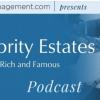It’s hard to deny the increasing momentum toward independence. Whether it’s studies showing year-over-year growth nearing double digits, or headlines touting another breakaway team making the leap, there are few advisors who can deny the significance and validity of the space.
Yet, while many advisors are interested in the freedom, flexibility and control independence offers, there are still those who presume it’s just “not right” for their business—and some may be correct. But often we find there are advisors who are simply held back by fear, such as concerns over a lack of support, or that clients won’t be well served without the big bank behind them, or of the inability to monetize their life’s work.
While the fear itself may be real, it’s a lack of knowledge that often drives it. And it’s for that very reason that I set out just over a year ago to create a podcast series on independence. That is, as a way to educate advisors on the space and empower them to make decisions based on facts—rather than be trapped by fear of the unknown.
Throughout the series, I’ve had the opportunity to have conversations with advisors who made the leap and industry leaders who provide the backbone of support, and we’ve found common themes that help dispel the myths and reveal the facts. As a result, we’ve gathered the five most frequently asked questions from advisors and responses from those who live and breathe independence every day. We've also encapsulated the brilliance these guests shared in our most recent episode, so I encourage you to listen to it for more on the topics.
1. How is independence better for advisors?
David Canter, executive vice president and head of the RIA segment at Fidelity Clearing & Custody Solutions, shared what he sees as the main reason why independence is better for advisors: the ability to build a culture and legacy with real enterprise value, which leads to greater job satisfaction and overall happiness.
Ultimately, advisors who make the leap do so for the freedom and flexibility to build a business with fewer limitations that will serve both their economic and intrinsic needs. It was a sentiment that many advisors on the series shared, but Jim Dickson, founder and president of Sanctuary Wealth Partners and a former Merrill Lynch insider, most aptly stated, “Advisors want to own their tomorrow and the only way to do that, candidly, is in the independent space.”
2. How is independence better for clients?
The reality is that the upside for clients is tremendous. As Tim Oden, senior managing director for business development at Schwab Advisor Services, shared, “First and foremost, clients get an advisor who’s acting as a fiduciary in a channel that is supporting fiduciary decision-making.” That means advisors are making a commitment right from the start to base any and all decisions on their clients’ best interests. Everything from products offered to technology and communication is designed with the client in mind—and that’s an especially critical point for advisors who have concerns that an independent practice might not be suitable for their ultra-high-net-worth clients. It’s that ability to custom build a business around clients’ needs that does not exist within the traditional brokerage world.
And when it comes to a more-specialized practice, like a multifamily office serving ultra-high-net-worth clients, Matt Celenza, managing partner of Boulevard Family Wealth and a former Merrill Lynch advisor, said that product offerings are at least in lockstep with the wirehouses, but typically better because of the lack of limitations and the ability to shop the Street. Therefore, replicating or improving upon products and processes is not an issue.
Jason Cort, also a former Merrill advisor, built his firm Quadrant Private Wealth “from the ground up ... solely for the purpose of meeting our clients’ needs and attracting new clients.” And while he and his team thought they had access to full open architecture and would be able to do what they needed to serve their clients’ best interests at the wirehouse, he said about going independent, “Our eyes were truly opened about all the things that we can now do, that we could never do before.”
3. Can a wirehouse advisor be a “true fiduciary”?
While most advisors act in their clients’ best interests and see themselves as fiduciaries, the reality is that a captive environment simply cannot support that belief. Mark Tibergien, CEO of BNY Mellon's Pershing custody unit, puts it this way: “I think that is the reason why [advisors] leave [the big firms]; because they perceive themselves as fiduciaries, operating in their clients’ interests. But the reality is that the way in which their firms behave, manage them or force them to think in terms of productivity or products may cause them to operate in conflict with what they fundamentally believe.”
What advisors find, he shared, “is that the independent space offers a closer alignment between the way in which clients want to be served and how fiduciary advisors behave.”
4. What type of support is available for independent businesses?
When it comes to setting up a firm or managing compliance, Matt Sonnen, founder and president of PFI Advisors, noted, “That is one of the big things that keeps advisors up at night.”
Yet the momentum of growth has given rise to a cottage industry of support; specialists exist in all aspects of an independent business from start-up to compliance and on to inorganic growth and M&A—including custodians, service providers, lenders, investors, consultants, attorneys and recruiters.
Shirl Penney, founder and CEO of Dynasty Financial Partners, thinks that this burgeoning support ecosystem is actually responsible in part for the continued growth of the independent space, with “really strong potential to not only continue the movement but perhaps even accelerate it,” as it allows more and more advisors to fill in talent gaps and focus on their core competencies. As the ability to fill in gaps continues to grow, more and more advisors are getting comfortable with making the leap.
5. How do firms achieve maximum enterprise value?
All of our guests agree that those firms built with the end in mind are the ones that will realize the greatest value at the end of the day.
Identifying the key attributes that create value is the starting point. Liz Nesvold, founder and managing partner of Silver Lane Advisors (recently acquired by Raymond James), found that those firms with “real franchise value” possess a strong operational infrastructure; a deep bench of talent; replicable processes; scalability; an intense focus on growth; and solid client relationships built on long-term trust and confidence.
And that value is not created by accident. As she put it, “When building with the end in mind, you’re essentially building out the attributes that will make you attractive.”
Liz also described what she, and many other industry leaders see as one of the most opportunity-rich environments for independent firm owners. That is, there’s plenty of capital out there for “franchise players”—so those who build it the right way from the start find themselves with many favorable options.
Despite all of the positive news and enormous growth of the space, the reality is that not everyone was meant to be a business owner. But for those who are curious about what it means to go independent, yet not sure where to gain an objective and thorough understanding of all the space has to offer, we challenge you listen to the podcast. If nothing else, it will give you a fresh understanding of a vastly changed industry landscape.






